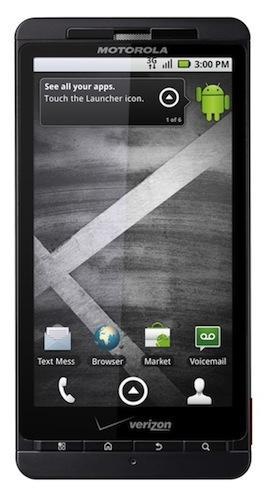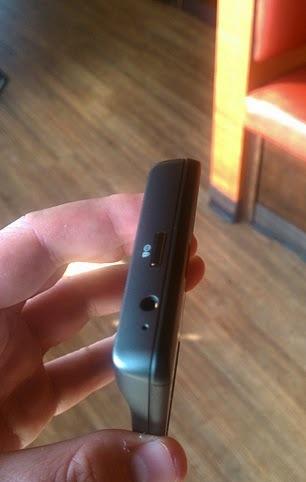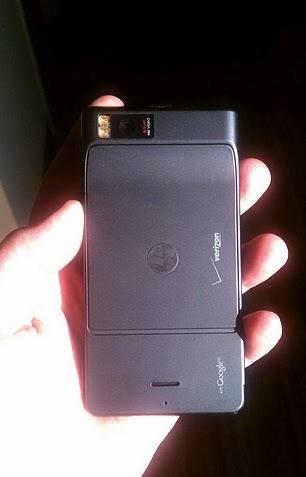
What's Good: Powerful 1 GHz processor; 8 GB of internal storage; 4.3-inch touchscreen; HDMI video capabilities; 8.0-megapixel camera.
What's Bad: The DROID X lacks a front-facing camera for video calling; battery life is frustratingly short.
The Verdict: It's Verizon's most powerful, feature rich DROID yet - just be sure to carry an extra battery on busy days.

Smartphones, smartphones everywhere! Summer 2010 will forever be dubbed the "Summer of smartphones," and the fun continues with the Motorola DROID X, available now through Verizon Wireless. Packing a 4.3-inch display, 8.0-megapixel camera, 8 GB of internal memory, and a fast 1 GHz Texas Instruments processor, it's a high-end superphone that is a direct competitor to the HTC EVO 4G, iPhone 4, and Galaxy S series. That being said, does it offer enough to distinguish it from the other superphones on the market?

On looks alone, the DROID X is right up there with the iPhone 4 in my mind. With the camera bump and physical buttons below the touchscreen, it has a retro and industrial look to it. The Motorola DROID X ships in a small box with the device, battery, AC adapter, USB cable (which doubles as the power cord), and 16 GB microSD card (installed in the device). Measuring in at 5.0 inches tall by 2.6 inches wide by 0.4 inch thick, the DROID X tips the scales at 5.47 ounces, making it one of the larger phones on the market today. The phone offers a beautiful 4.3-inch LCD display with 480 X 854 pixels. Though it's the same size screen as the one found on the EVO 4G, the DROID's 16:9 aspect ratio makes the screen long and narrow, so it's less wide and easier to grip in one hand.

The left side of the phone houses the microUSB and HDMI ports, while the volume rocker and camera button are on the right side. The power/lock button and 3.5mm headphone jack are on the top, and the camera and speaker are both located on the back of the device. The DROID X offers four physical buttons just under the display - menu, home, back, and search. The camera portion of the device is slightly raised, giving the DROID X a noticeable hump at the top of the device. Some may find the design element frustrating, but as my testing went on, the camera hump made for a great (and quick) way to remove the device from my pocket.

Armed with a 1 GHz Texas Instruments OMAP processor, the DROID X is exceptionally speedy. In each and every app I threw at it, the phone performed very well, with no lag whatsoever. The DROID X offers Android 2.1 with a toned down version of Motorola's MOTOBLUR user interface. It's not as intrusive as the original BLUR interface found on the Devour and CLIQ series, but elements are still present. The bottom part of the screen offers three dedicated shortcuts - phone, menu, and contacts - and bits and pieces of BLUR can be seen throughout the interface. Overall, it's clean, easy to use, and is much better than the cluttered BLUR of the past, but I found myself missing the layout of HTC's Sense UI. At the end of the day, it's really personal preference, so be sure to visit the store and play with the DROID X and DROID Incredible before making a final purchase.

With an 8.0-megapixel camera, the DROID X takes fantastic pictures for a cell phone. The camera offers a dual LED flash and is one of the few cell phones on the market to support a physical shutter (no kidding, a shutter actually slides across when you take the picture). Shutter speed is slightly slower than other smartphones I've worked with recently, but it's not a major issue. Editing options and special features include eight scenes (auto, portrait, landscape, sport, night portrait, sunset, macro, and steady shot), eight effects (normal, black and white, negative, sepia, solarize, red tint, green tint, and blue tint), picture modes (single shot, panorama assist, self portrait, and multi-shot), picture resolution (6 MP, 8 MP, 5 MP, 3 MP, and 2 MP), video resolution (720p, D1, VGA, and QVGA), face detection, ISO, exposure, shutter animation, and more. The video camera is equally good, and was great for recording videos on the go. Given the increasing popularity of Apple's FaceTime, fring, and Qik, I wish the DROID X offered a front-facing camera for video calling.

I worked with the DROID X in the Charlotte metropolitan area, and call quality was very good across the board. The device offers three microphones to balance overall call quality - one on the bottom, one on the back, and one on the top of the device. The earpiece on the DROID X is significantly loud, and reminds me of the clarity from the original DROID. In call quality tests, my callers said I sounded fantastic, with some unable to tell that I was talking on a cell phone. When placing the DROID X on speakerphone during a visit to my local coffee shop, I was able to hear my callers well, despite a great deal of noise in the background. They immediately noticed it, but were able to hear me. I paired two Bluetooth headsets to the device, and both connected with ease.

Like the DROID Incredible, the DROID X is exceptionally conservative when it comes to the correlation between "bars" and actual signal strength (dBm). As an example, while working with the device, I found that it was often in the 1-2 bar range when operating somewhere in between -80 and -85 dBm. Given that you need to go over about -107 dBm to really consider dropping a call, -85 dBm is quite good. So when you pick up the DROID X and notice that it has less "bars" than other devices on the market, rest assured that the device is (likely) working just fine. On the topic of reception, I took the DROID X to two known Verizon fringe areas, and while the calls were exceptionally chopping during my tests, I never dropped a call.

As expected, the DROID X runs on Verizon's EVDO Rev. A network, and data speeds were good throughout testing. Data-intensive applications loaded quickly, and operated well during my time with the phone. On the browser front, the mobile CNN homepage loaded in about 5 seconds, PhoneDog's mobile page loaded in about 12 seconds, and the full ESPN homepage loaded in about 26 seconds. I installed the SpeedTest application on the device, and in three separate tests in Charlotte, I averaged an 882 kbps download speed, and a 739 kbps upload speed. Like the Palm Pre Plus, Verizon offers 3G Mobile Hotspot for an additional $20 monthly. I tested it in lieu of my regular internet connection during a busy afternoon, and was able to get all of my work done with ease. It's a neat feature, and is an economical alternative to purchasing a separate MiFi unit.
The DROID X offers a 1540 mAh battery with estimated talk time of 8 hours, and 9.2 days of standby time. As it stands, the consensus with Android is that battery life is universally poor, and the DROID X is no exception. With moderate use including calling, text messaging, e-mailing, use of applications, and a lot of Google Maps use, I was unable to make it through a full day. With exceptionally light use, including a few calls, text messages, and the occasional use of apps, I made it just over a day before the phone powered down. In my unofficial testing, overall battery life is slightly better than the EVO 4G, and slightly worse than mid-range devices like the LG Ally and Samsung Intercept. If you are a heavy user or someone who travels regularly, be sure to pick up an extra battery and car charger when you can.

DROID X is an awesome superphone, and is a much needed form factor in the Verizon lineup. The 1 GHz processor, combined with the 4.3-inch display and 8.0-megapixel camera, make this an incredibly feature-rich device that blew through everything I was able to throw at it. I tend to prefer Sense to MOTOBLUR, but the actual design of the device is my favorite Android phone to date. While I wish the device lasted a bit longer in the battery department, but it's more of an issue with Android and the way it operates than the device itself. The DROID X is available through Verizon Wireless for $199.99 after a $100 mail-in rebate and new customer agreement.